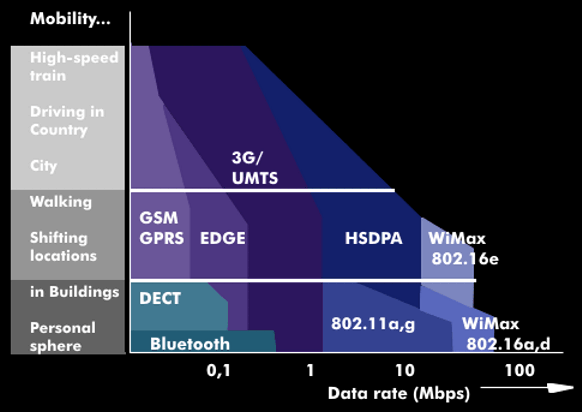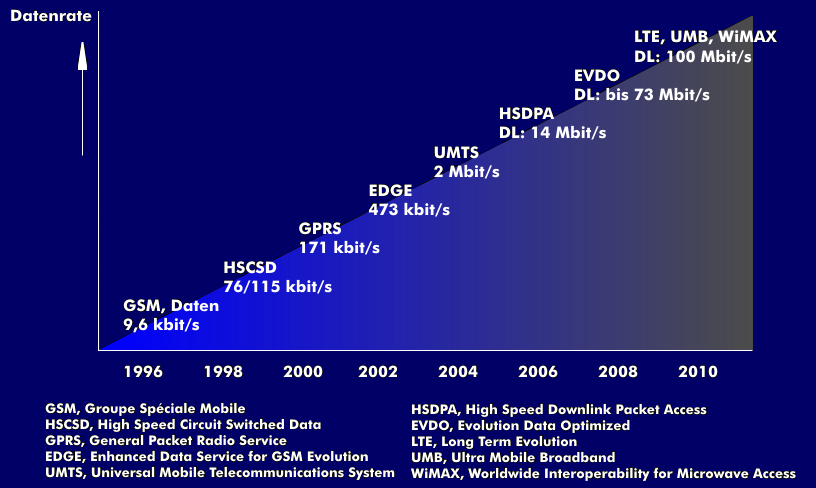mobile communications
Mobile communications, with its wide range of mobile networks, technologies, and services, meets the specific mobility requirements of users. This means: location-independent communication with other fixed- network or mobile subscribers. The rapid development of mobile communications is reflected in the data rate, which has evolved from the single- digit kilobit range to the two- or three-digit megabit range in just two decades.
Mobile communications are used equally over small distances in the home, on corporate campuses, regionally, nationally and globally. Just think of cordless telephony used in the home, trunked radio, analog regional radio networks, digital supraregional cellular networks, or global satellite mobile communications.
The classification of networks into generations can serve as an orientation. The first generation( 1G) is represented by analog circuit-switched mobile communications networks. These mobile communications networks include the A network, B network and C network. The GSM network established in the 1990s belongs to the 2nd generation( 2G) and operates digitally with circuit switching. With the 3rd generation( 3G) comes packet switching with UMTS, and with the 4th generation( 4G) high-speed mobile communications with data rates of 100 Mbit/s and more make their debut. The 5th generation( 5G) supports data rates with transmission rates up into the gigabit range. As a comprehensive concept, 5G will combine various networks, technologies and applications.
The enormous increase in data rates is one aspect when considering mobile communications, and the range of services is another. If in the early 1990s mobile communications was used exclusively as a voice service, with relatively low data rates, because of the low transmission speeds, it is the data application that has experienced a unique development, which has shaped the service offering in no small measure. While mobile communications were primarily used for telephony in the 1990s, there is now a comprehensive range of services for voice, short message services, data services, multimedia services, location-based services, positioning and localization services, IP services, mobile TV, and even high-definition television ( HDTV).


